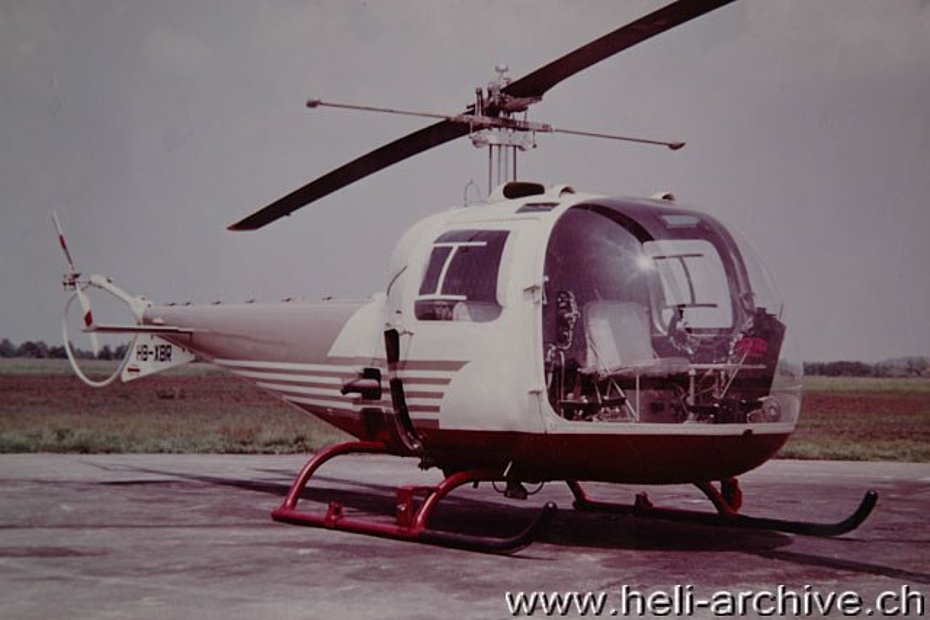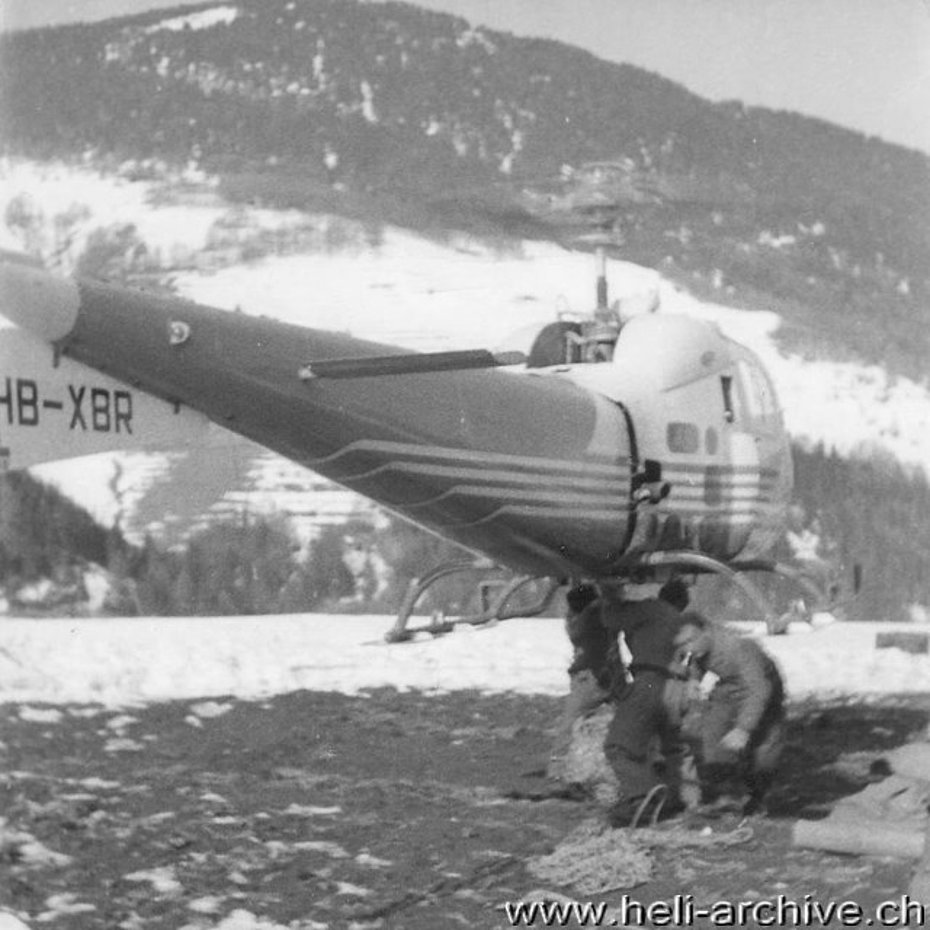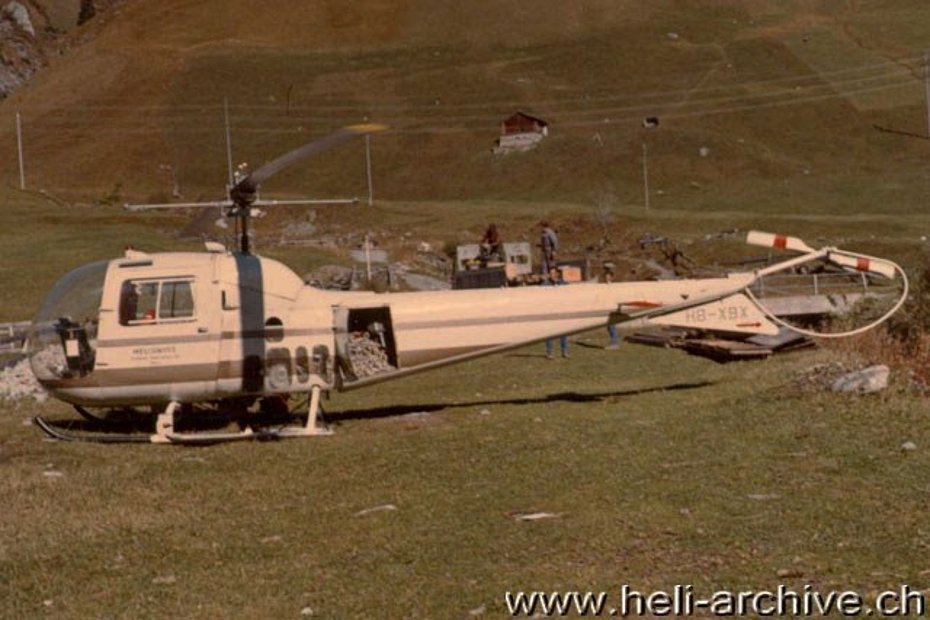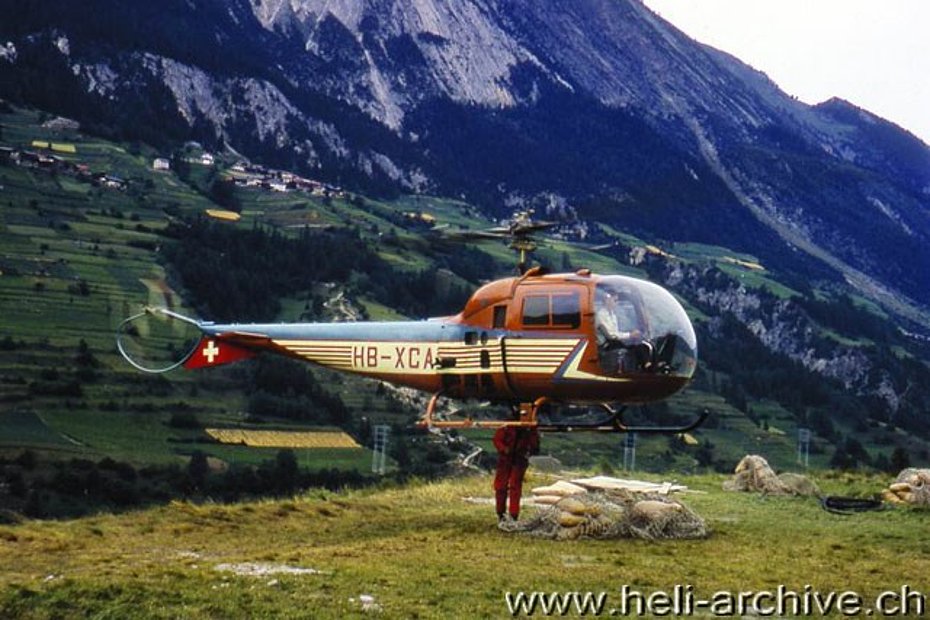



Agusta-Bell 47J-3B-1 - History and technical description
Some historical notes
The Italian firm “Costruzioni aeronautiche Giovanni Agusta” alongside the production of the Bell 47 series designed by Bell (the first manufactured in Italy was the G, followed by the G-2 and the “Jey” commonly known in Italy as the “Jota”), developed some variants on its own initiative.
The goal was to fulfill the requests of the operators of the Alpine area who were looking for light helicopters with better performances. The first models of this series, such as the J or the J-2, had in fact a limited power reserve and were not particularly suited to operate above altitudes of 1’000-1’500 meters.
First improvements were achieved with the introduction in 1960 of the J-3, nicknamed Super Ranger, which was powered by a Lycoming VO-540-B1B3. The engine had a max take-off power (MTOP) of 227/305 kW/hp and a 194/260 kW/cv max continuous power (MCP). Much later Agusta introduced the J-3B powered by a Lycoming TVO-435-A1A (MTOP 193/260 kW/hp, MCP 164/220 kW/hp).
From the latter model Agusta developed in 1963 the Agusta-Bell 47J-3B-1, a helicopter similar to its predecessors in its general aspect, but with much improved altitude performances when compared to the early models of the series.
Its secret was hidden behind the engine’s panels. As the contemporary G-3B-1, the J-3B-1 was powered by a Lycoming TVO-435-B-1A equipped with a turbo-supercharger. Compared to others, the J-3B-1 variant was produced in a limited series. About twenty were manufactured, and most of them were finding service in Austria, Spain, Switzerland and Italy.
In that period in fact the first turbine powered helicopters made their appearance. Agusta also developed some prototypes, such as the 115, 105 and 105B models. The latter was quite similar to the J-3B-1. It had a similar payload but was powered by a Turboméca-Agusta TA-230 turbine. This model was presented during the 26th Paris Air Show (1965) but it was later abandoned after 15h30’ of test fights (it is now exhibited at the Agusta’s museum in Cascina Costa/Italy).
In 1966 Agusta started the production in series of the Bell 206A Jet Ranger which obtained a great commercial success. The entire AB-47 series probably fell “victim” of this success because its production slowly decreased until Agusta decided to stop its manufacture.
For its excellent mountain performances the Agusta-Bell 47J-3B-1 is considered the top variant of the J series.
Technical description
The Agusta-Bell 47J-3B-1 is a light four/five place helicopter of standard configuration. The main rotor is the classical Bell see-saw type with stabilizer bar. The high inertia rotor blades are of all-metal construction. The fuselage is made in three sections: cabin, center frame and tail boom. The engine compartment is separated from the cabin and the tail boom sections by two titanium firewalls. The pilot seats frontally in the center of the cabin and has an excellent visibility in all directions. The passengers seat behind the pilot side-by-side in a foldable bench. The instrument panel, the engine controls and the radio are placed on the left side of the pilot. Pilot and passengers climb on the helicopter through two front-hinged doors. In case of necessity the two doors (which have wide windows) can be easily taken apart. On the left side of the tail boom there is a large baggage compartment (dimensions 63 x 73 x 88 cm – volume 0.41 m3) where it is possible to load up to 110 kg. The horizontal stabilizer is a two-position fixed type. Its position is changed when the float or litter kit is installed. To improve the longitudinal stability the helicopter has a vertical fin, which is also commonly used to write the registration. The two metal blades tail rotor is protected by a tail rotor guard. The helicopter is equipped with a skid-type landing gear. Two ground wheels can be installed on the skids. The wheels are positioned up or down by means of a lever. The flying controls are of classical type. With the optional rotor brake installed, the stoppage of the main rotor is accomplished in less than 30 seconds. Hydraulic power boost on cyclic (and as an optional on the collective) make the J3-B1 easier and less fatiguing to pilot.
The helicopter is powered by an air-cooled, six cylinders, turbocharged Lycoming TVO-435-B1A engine. The engine is rated at 201/270 hp take-off power (2 min) and at 164/220 kW/hp max continuous power. The engine is equipped with a Garrett AiResearch T-11 exhaust-driven turbocharger provided with automatic controls to prevent overspeed of the turbine. The automatic controls maintain sea level conditions at the carburetor intake from sea level to 4'270 meters of altitude and thus permit the helicopter to maintain constant performances throughout that altitude range.
The lateral panels of the engine compartment can be easily taken down when necessary (for inspections for example). The helicopter can also be flown without these panels. The fuel (Avgas 100/130) system includes two fuel tanks located on the top of the helicopter with a total capacity of 184 liters. Tanks are serviceable from either side. The average fuel consumption is about 80 liters/h. Power is transmitted from the engine to the main and tail rotors through a two-stage planetary transmission. The electrical system consists of unipolar 28V DC system. A 28V 50A generator is provided, mounted on the right hand side of the transmission assembly. A voltage regulator is provided and is readily accessible for inspection and maintenance. The 24 V 11Ah battery is installed in the center section. The ignition system is provided with magnetos and an induction vibrator which supplies battery power to the retard breaker of the right magneto. These units greatly improve engine starting characteristics, especially during cold weather.
If requested by the customer prior delivery, the J-3B-1 could be transformed with an optional kit into a five seater (pilot in front and four passengers seated side-by-side rear). After the modification the empty weight was increased of about 8.9 kg.
Like the contemporary Bell 47 models the J-3B-1 airframe was approved for 1’200 hours of flying between overhauls. If the information released is correct Agusta produced overall 123 units of the J-2, J-2A, J-3, J-3B and J-3B-1 series (serial numbers from 2001 to 2123).
Civil employ
The Agusta-Bell 47J-3B-1 was mainly used for the transportation of people and building materials, and SAR operations. The last three manufactured (s/n 2121-2123) were used by the Italian Police corp. Seven units were registered in Austria.
Performances
In standard atmospheric conditions, at its maximum take-off weight of 1'340 kg, the helicopter has a cruising speed of 148 km/h, while the never exceed speed at sea level is 169 km/h. Its service ceiling is about 5'340 meters. In the same flying conditions the helicopter hovers in ground effect at about 5’030 meters, or 3'720 meters out of ground effect. The initial rate of climb is about 276 m/min.
With an average hourly fuel consumption of 80 liters, its range is about 338 km, corresponding to about 2h15min of flight endurance.
Rotor and engine limitations
In flight the rotor rpm must be kept between 322 and 370 rpm while the engine range must be kept among 3'000 and 3'200 rpm (oil pressure 50-70 PSI, cylinders head temperature 100-246°C).
Dimensions and weights
The main rotor of the Agusta-Bell 47J-3B-1 has a diameter of 11.31 m (disc rotor area 100.8 m2), while its tail rotor had a diameter of 1.78 m (rotor disc area 2.35 m2). The fuselage has a length of 9.87 m. The height measured on the top of the rotor mast is 2.83 m.
The standard empty weight of the aircraft is about 845 kg, while its MTOW is 1’340 kg. Allowing for a standard pilot weight (77 kg) and with a fuel and oil reserve for one hour of flight (about 65 kg) the helicopter could carry a payload of about 300 kg suspended on its cargo hook or 3 (or 4 ) passengers.
Autorotation
To correctly execute an autorotation (simulating for example an engine failure during the cruise flight) it is necessary to immediately push down the collective pitch lever and correct the yaw with the right pedal. After this it is necessary to maintain a speed of about 64 km/h. After the flare the pilot must level the aircraft at a height of about 3 meters and land within 4-5 seconds. The wide track (2.28 m) of the robust skid landing gear guarantees a sure contact with the ground.
Optional equipments
The helicopter could be provided with the following main optional equipments: litter kit for two casualties, float landing gear, external cargo sling, internal cargo deck, aux fuel tanks, hoist kit, dual controls, night flying kit, spray kit, snow shoes, external cargo carriers, special instrument panel for instrument flying, heater, first aid kit, fire extinguisher.
The Agusta-Bell 47J-3B-1 in Switzerland
Three J-3B-1 were in service in Switzerland in the period between 1963-1968. The first customer was the Valais Section of the Swiss Aero Club (VSSAC) which employed the famous glaciers pilot Hermann Geiger.
Geiger started to use the first helicopter for SAR operations in the Spring of 1957 when he received the Bell 47J Ranger HB-XAU. This helicopter was a donation by the Swiss supermarket chain “Coop”. Using appropriate flying tactics Geiger, who was one of the most experienced mountain pilots in Switzerland, was able to land (and take-off!) the Ranger at altitudes exceeding 3’000 meters. Much later this helicopter was also used for the transportation of people and building materials. Obviously the availability of a more powerful helicopter was enthusiastically greeted by him.
On the 12th of June 1963 he went to Cascina Costa to get the Agusta-Bell 47J-3B-1 HB-XBR (s/n 2050 a/c 1963), the first of the new series. This helicopter was equipped with dual control, night flying kit, rotor brake and a King KY.95 radio. It was based in Sion/VS and was mainly used by him and Fernand Martignoni, SVAAC’s second helicopter pilot. As its predecessor it was used for light transportation, SAR operations and the training of new pilots.
On the 18th of March 1965, while doing some transportation flights in the Entremont Valley, Martignoni had an accident with this helicopter. The main rotor blades hit some tree tops causing the helicopter's crash. In the accident he was seriously injured and the HB-XBR, which had in the meantime logged about 1’100 hours of flight and was ready to be overhauled, was completely destroyed.
The helicopter was replaced with the new HB-XCA (s/n 2087 b/y 1965) operated at the beginning by the SVAACS but property of the Swiss Air Rescue Guard (SARG). By August the helicopter was operated by the newly founded Air Glaciers based in Sion.
On the 6th of June 1968 the helicopter was presented during a SARG meeting in Bad Ragaz/GR along with other helicopters and airplanes. During the flight to the base the young Valaisan pilot Jean-Pierre Allet unfortunately hit the cables of a cable car after crossing the Oberalp Pass. A few instants later the helicopter crashed and the pilot was killed.
The third J-3B-1 also had a short period of service. Heliswiss placed its order for the HB-XBX (s/n 2068 b/y 1964) on the 26th of May 1964. The new aircraft started its flying activity in Switzerland in August. The helicopter, equipped with a cabin heating system, night flying kit, anti-collision lights and an external Siren cargo sling, cost about 46'829'250 Italian pound, corresponding to about 343'896.— Sfr. The HB-XBX was mainly used for the transportation of passengers and building materials as well as for SAR operations.
It is during one of these that, on the 25th of September 1966, it was damaged beyond repair. While hovering in ground effect the rotor blades suddenly hit a rock. A few instants later the helicopter, which had logged about 662 hours of service, impacted the ground so violently that the pilot was ejected outside the cabin and was seriously injured. The aircraft was destroyed by the impact and the post-crash fire.
Video
Watch this video filmed in 1966 showing Fernand Martignoni at the controls of the Agusta-Bell 47J-3B-1 - www.notrehistoire.ch/medias/582
HAB 12/2010

